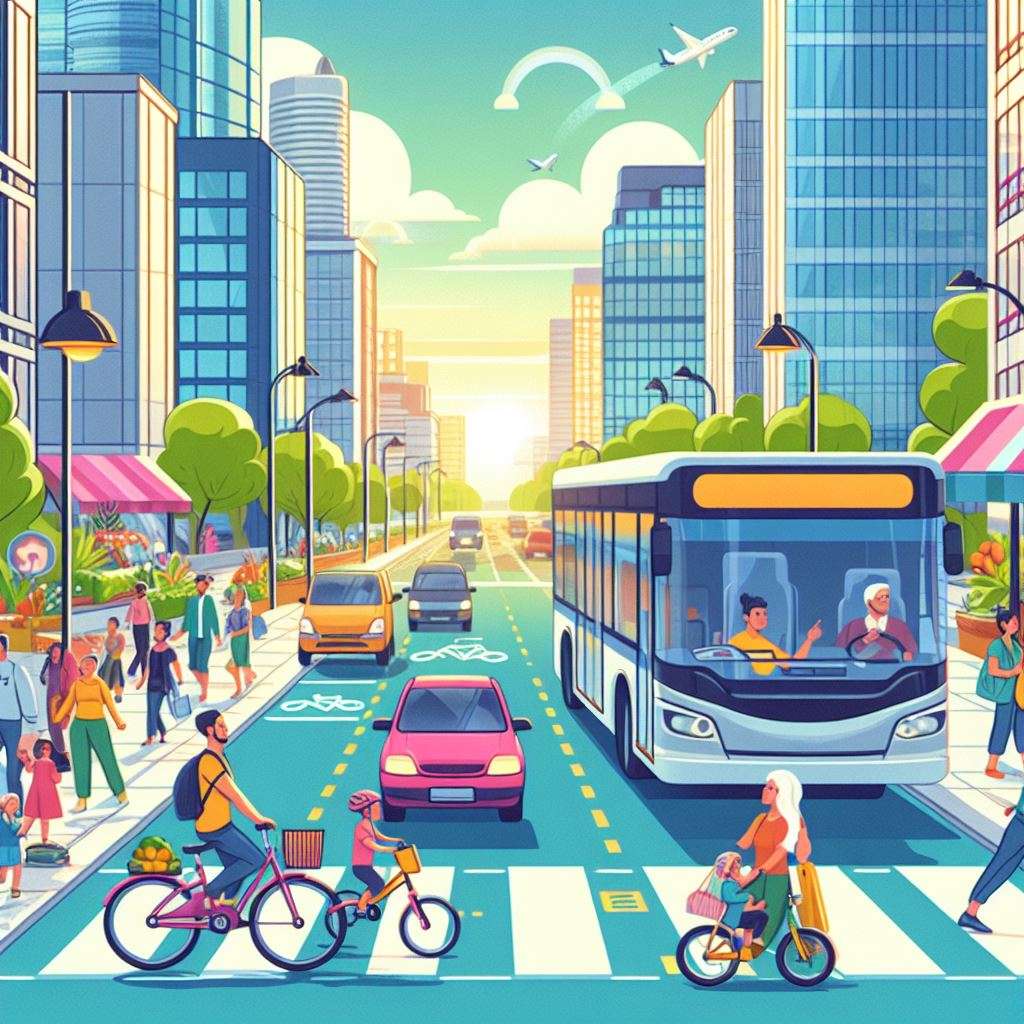Introduction
Imagine a world where the air is clean, the water is pure, and the land is fertile. A world where humans and nature coexist in harmony, and where every living being has a chance to thrive. Sounds like a utopian dream, right?
Unfortunately, the reality is far from this ideal scenario. According to the United Nations, the world is facing a “triple environmental emergency” of climate change, biodiversity loss, and pollution. These crises are threatening the health and well-being of millions of people, as well as the survival of countless species. The situation is dire, and it calls for urgent and collective action.
But what can we do as individuals to make a difference? How can we contribute to a more sustainable future for ourselves and the generations to come?
The answer lies in adopting “green habits” – small, everyday actions that reduce our environmental impact and promote eco-friendly living. These habits may seem insignificant on their own, but when multiplied by millions of people, they can have a huge impact on a global scale.

In this article, we will explore some of the key areas of green habits that can help us live more sustainably. We will also provide practical tips and examples that you can easily implement in your own life. By following these simple steps, you will not only benefit yourself, but also the planet and all its inhabitants.
Reducing Waste
One of the most important green habits that we can adopt is reducing the amount of waste that we generate. Waste is a major source of environmental pollution, as it contaminates the soil, water, and air. It also contributes to greenhouse gas emissions, which cause global warming and climate change. Moreover, waste disposal often involves burning or burying, which depletes natural resources and destroys habitats.
To reduce waste, we need to rethink our consumption patterns and habits. Here are some tips that can help you achieve this goal:
- Use reusable bags instead of plastic ones when you go shopping. Plastic bags are one of the most common items found in landfills and oceans, where they harm wildlife and ecosystems. Reusable bags are more durable and eco-friendly, and they can save you money in the long run.
- Compost your organic waste, such as food scraps, yard trimmings, and paper. Composting is a natural process that turns organic waste into nutrient-rich soil, which can be used for gardening or farming. Composting also reduces the amount of waste that ends up in landfills, where it releases methane, a potent greenhouse gas.
- Be mindful of what you buy and how much you use. Avoid buying things that you don’t need or that have a short lifespan. Choose products that are made of natural, biodegradable, or recycled materials, and that have minimal packaging. Use only what you need, and avoid wasting food, water, and energy.

By reducing waste, you can help conserve natural resources, protect the environment, and save money. You can also break the cycle of “throwaway culture”, which encourages overproduction and overconsumption, and fosters a sense of detachment from the consequences of our actions.
Embracing Energy Efficiency
Another key area of green habits that we can embrace is energy efficiency. Energy efficiency means using less energy to perform the same tasks or using energy more wisely and effectively. Energy efficiency is crucial for reducing our environmental impact, as energy consumption is one of the main drivers of greenhouse gas emissions and climate change. It is also beneficial for our personal and economic well-being, as it lowers our energy bills and improves our living standards.
To embrace energy efficiency, we need to adopt some simple habits that can help us conserve energy and use it more wisely. Here are some examples that you can try:
- Switch to LED bulbs, which use up to 80% less energy and last up to 25 times longer than incandescent bulbs. LED bulbs also produce less heat and emit less carbon dioxide, which makes them safer and more eco-friendly.
- Power down your electronics when you are not using them, or use power strips that can turn off multiple devices at once. Many electronics consume energy even when they are turned off or in standby mode, which is known as “phantom load” or “vampire power”. This can add up to a significant amount of energy and money wasted over time.
- Utilize natural light as much as possible, and adjust your curtains, blinds, and shades to optimize the amount of sunlight that enters your home. Natural light is free, renewable, and healthy, as it boosts your mood and productivity. It also reduces your need for artificial lighting, which saves energy and money.

By embracing energy efficiency, you can help reduce greenhouse gas emissions, combat climate change, and save money. You can also explore renewable energy options, such as solar panels, wind turbines, or hydroelectric power, which can provide you with clean, green, and affordable energy.
Sustainable Transportation
A third area of green habits that we can adopt is sustainable transportation. Sustainable transportation means using modes of transportation that have a low or zero environmental impact, such as walking, cycling, public transport, carpooling, or electric vehicles. Sustainable transportation is essential for reducing our environmental impact, as transportation is one of the largest sources of greenhouse gas emissions and air pollution. It is also beneficial for our health and well-being, as it promotes physical activity, reduces stress, and improves social interaction.
To adopt sustainable transportation, we need to rethink our travel choices and habits. Here are some suggestions that you can follow:
- Walk or cycle whenever possible, especially for short distances or trips that do not require carrying heavy loads. Walking and cycling are the most eco-friendly and healthy modes of transportation, as they do not emit any greenhouse gases or pollutants, and they improve your fitness and cardiovascular health.
- Use public transport, such as buses, trains, subways, or trams, whenever possible, especially for long distances or trips that involve multiple stops. Public transport is more efficient and eco-friendly than private cars, as it carries more people per vehicle, uses less fuel per passenger, and reduces traffic congestion and road accidents.
- Carpool with your friends, family, colleagues, or neighbors, whenever possible, especially for trips that involve common destinations or routes. Carpooling is a great way to save money, reduce greenhouse gas emissions, and make new friends. You can also use online platforms or apps that connect you with other carpoolers in your area.
- Explore the growing trend of electric vehicles, such as cars, bikes, scooters, or skateboards, which run on batteries or electricity instead of gasoline or diesel. Electric vehicles are more eco-friendly and cost-effective than conventional vehicles, as they do not emit any greenhouse gases or pollutants, and they have lower maintenance and fuel costs. They also have the potential to integrate with renewable energy sources, such as solar or wind power, which can further reduce their environmental impact.

By adopting sustainable transportation, you can help reduce greenhouse gas emissions, air pollution, and traffic congestion, and improve your health and well-being. You can also support the development of sustainable infrastructure, such as bike lanes, sidewalks, public transport networks, or charging stations, which can make sustainable transportation more accessible and convenient.
Conscious Consumption
A fourth area of green habits that we can adopt is conscious consumption. Conscious consumption means being aware of the environmental and social impacts of our purchasing decisions and choosing products and services that are ethical, sustainable, and responsible. Conscious consumption is vital for reducing our environmental impact, as consumption is one of the main causes of environmental degradation, resource depletion, and waste generation. It is also beneficial for our personal and social well-being, as it fosters a sense of satisfaction, gratitude, and connection.
To adopt conscious consumption, we need to challenge the culture of mass production and overconsumption and embrace the values of quality, simplicity, and mindfulness. Here are some tips that can help you achieve this:
- Choose quality over quantity, and buy only what you need and love. Avoid buying things that are cheap, low-quality, or disposable, as they often have a high environmental and social cost, and they do not last long or bring you joy. Instead, invest in things that are durable, functional, and meaningful, and that reflect your style and values.
- Support local businesses, especially those that are eco-friendly, fair trade, or social enterprises. Local businesses are more likely to use local resources, employ local people, and contribute to local communities. They are also more likely to have higher environmental and social standards and to offer unique and authentic products and services.
- Minimize impulse purchases, and plan before you shop. Impulse purchases are often driven by emotions, such as boredom, stress, or envy, and they rarely satisfy our true needs or desires. They also result in unnecessary spending, clutter, and waste. To avoid impulse purchases, you can make a shopping list, set a budget, or wait for a cooling-off period before you buy something.
- Promote the benefits of repair, reuse, and secondhand items. Repairing, reusing, and buying secondhand items are excellent ways to extend the lifespan of products, reduce waste, and save money. They also allow you to express your creativity, individuality, and values. You can repair your broken items, such as clothes, furniture, or electronics, by yourself or with the help of professionals or online tutorials. You can reuse your old items, such as jars, bottles, or boxes, for different purposes, such as storage, decoration, or crafts. You can buy secondhand items, such as books, clothes, or toys, from thrift stores, online platforms, or swap events. By doing so, you can prevent useful items from ending up in landfills, and support the circular economy, which aims to minimize waste and maximize resource efficiency.
By adopting conscious consumption, you can help reduce environmental degradation, resource depletion, and waste generation, and improve your personal and social well-being. You can also foster a sense of satisfaction, gratitude, and connection, and break free from the pressures and pitfalls of consumerism.
Empowering Green Communities
A fifth and final area of green habits that we can adopt is empowering green communities. Empowering green communities means joining forces with other like-minded people who share your passion and vision for a sustainable future. Empowering green communities is essential for amplifying our environmental impact, as collective action is more powerful and effective than individual action. It is also beneficial for our psychological and emotional well-being, as it provides us with a sense of belonging, purpose, and support.
To empower green communities, we need to participate in and support neighborhood green initiatives, such as clean-up drives, community gardens, environmental education programs, and more. We also need to advocate for and support green policies and businesses, such as carbon taxes, renewable energy subsidies, eco-friendly products and services, and more. Here are some examples that you can follow:
- Participate in neighborhood green initiatives, such as clean-up drives, community gardens, environmental education programs, and more. These initiatives are great ways to improve your local environment, meet new people, learn new skills, and have fun. You can also start your initiative, or join existing ones, such as Greenpeace, WWF, or 350. org.
- Advocate for and support green policies and businesses, such as carbon taxes, renewable energy subsidies, eco-friendly products and services, and more. These policies and businesses are crucial for creating systemic change and transforming our society and economy toward sustainability. You can also voice your opinions, sign petitions, join protests, or vote for green candidates and parties. By empowering green communities, you can help amplify your environmental impact, create systemic change, and inspire others to join the green movement. You can also enjoy the benefits of belonging, purpose, and support, and feel empowered and hopeful for the future.
Conclusion
In conclusion, adopting green habits is one of the best ways to contribute to a more sustainable future for ourselves and the generations to come. Green habits are small, everyday actions that reduce our environmental impact and promote eco-friendly living. These habits may seem insignificant on their own, but when multiplied by millions of people, they can have a huge impact on a global scale.
In this article, we explored some of the key areas of green habits that can help us live more sustainably, such as reducing waste, embracing energy efficiency, adopting sustainable transportation, practicing conscious consumption, and empowering green communities. We also provided practical tips and examples that you can easily implement in your own life. By following these simple steps, you will not only benefit yourself, but also the planet and all its inhabitants.

We hope that this article has inspired you to take action and adopt green habits in your daily life. Remember, every little bit counts, and every action matters. Together, we can make a difference and pave the path to a greener future.
If you want to learn more about green habits and eco-friendly living, you can check out these resources and information:
